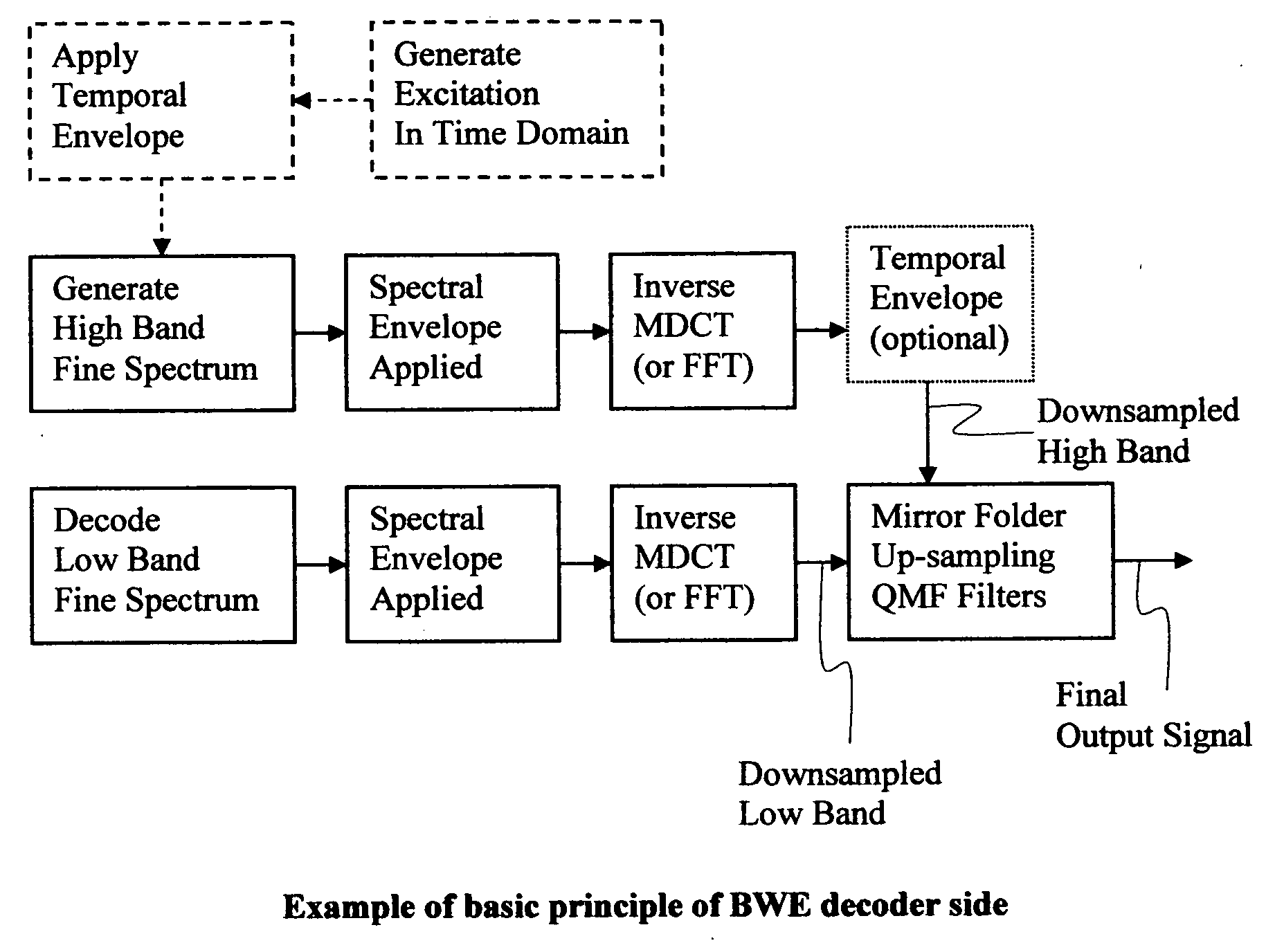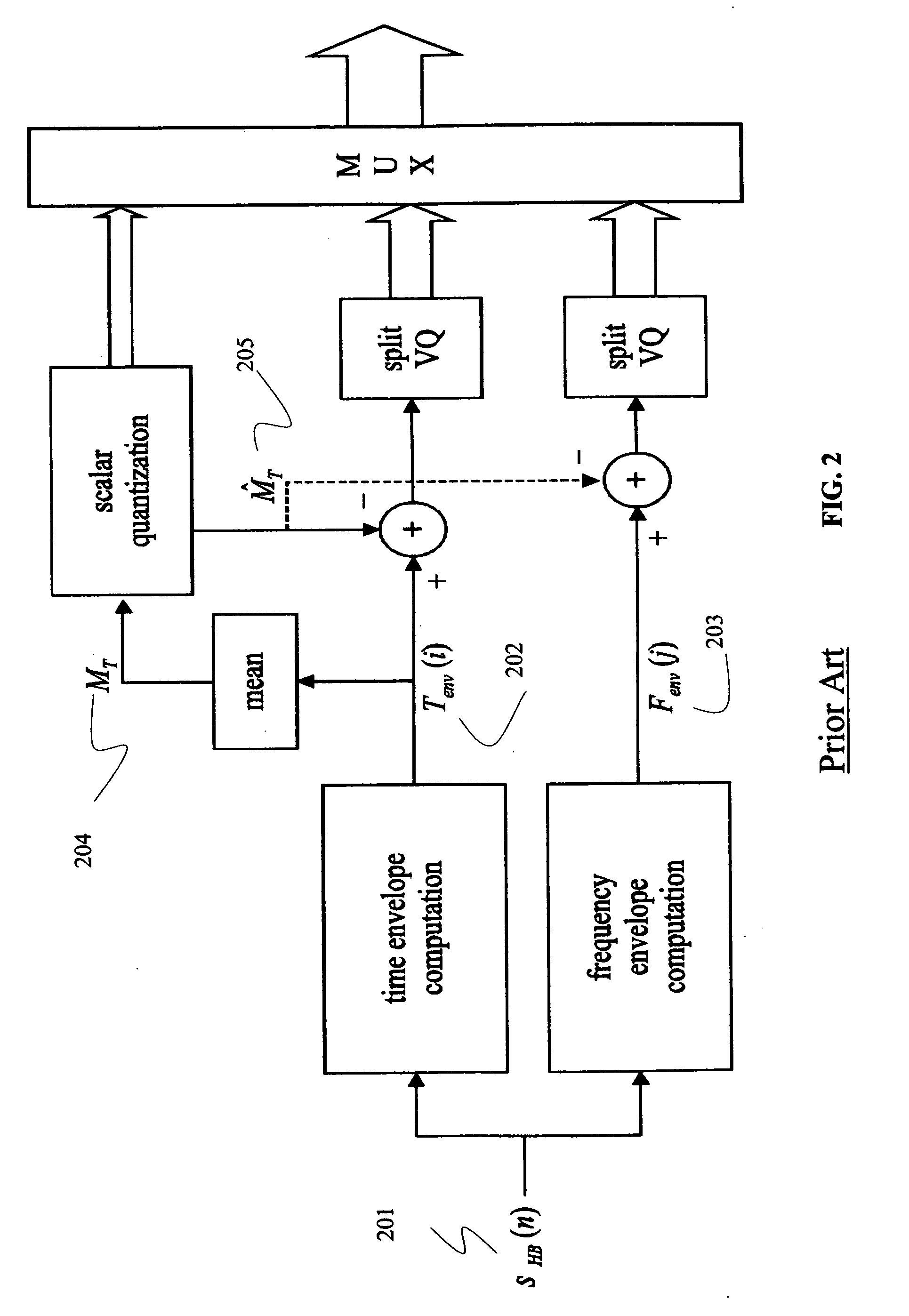Classification of Fast and Slow Signal
- Summary
- Abstract
- Description
- Claims
- Application Information
AI Technical Summary
Benefits of technology
Problems solved by technology
Method used
Image
Examples
Embodiment Construction
[0065]The making and using of the embodiments of the disclosure are discussed in detail below. It should be appreciated, however, that the embodiments provide many applicable inventive concepts that can be embodied in a wide variety of specific contexts. The specific embodiments discussed are merely illustrative of specific ways to make and use the embodiments, and do not limit the scope of the disclosure.
[0066]Frequency domain coding has been widely used in various ITU-T, MPEG, and 3 GPP standards. If bit rate is high enough, spectral subbands are often coded with some kinds of vector quantization (VQ) approaches; if bit rate is very low, a concept of BandWidth Extension (BWE) is well possible to be used. The BWE concept sometimes is also called High Band Extension (HBE) or SubBand Replica (SBR). Although the name could be different, they all have the similar meaning of encoding / decoding some frequency sub-bands (usually high bands) with little budget of bit rate or significantly l...
PUM
 Login to View More
Login to View More Abstract
Description
Claims
Application Information
 Login to View More
Login to View More - R&D
- Intellectual Property
- Life Sciences
- Materials
- Tech Scout
- Unparalleled Data Quality
- Higher Quality Content
- 60% Fewer Hallucinations
Browse by: Latest US Patents, China's latest patents, Technical Efficacy Thesaurus, Application Domain, Technology Topic, Popular Technical Reports.
© 2025 PatSnap. All rights reserved.Legal|Privacy policy|Modern Slavery Act Transparency Statement|Sitemap|About US| Contact US: help@patsnap.com



